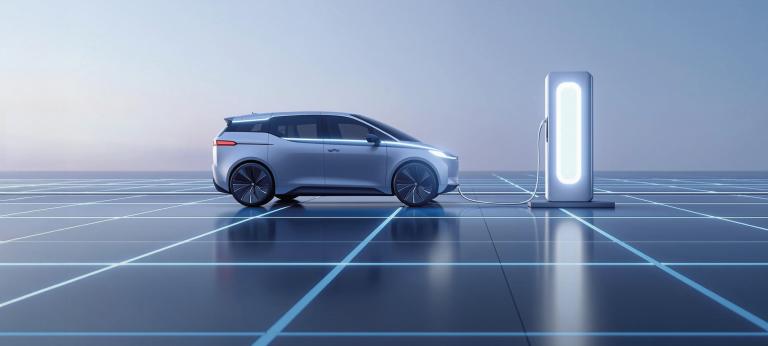EV Charging Index 2025: Steady progress
Despite tough market conditions, global EV use and charging infrastructure showed continued steady growth in 2024. Learn more in Roland Berger’s latest EV Charging Index.


By Masashi Go, Hitoshi Kaise and Waichi Yamamoto
A decline in EV* sales and limited growth in its charging market saw Japan rank 32nd of 33 nations in our latest Index. While other nations are embracing electrification, EVs are yet to truly take off in Japan and it has now fallen 11 places since 2023 (Edition 4).
*In this report, EV refers to PHEVs (plug-in hybrid vehicles) and BEVs (battery electric vehicles).

EV sales in Japan fell by almost 8% in 2024 compared to 2023. However, the wider auto market also suffered, ensuring the EV sales penetration rate remained steady but low (4%) – the third consecutive year between 3% and 4%. This is well below the global average of 25% and a long way off China’s 49% sales penetration rate. However, compared to the rest of the Asia-Pacific region (6%), Japan’s sales penetration rate is only just below average.
"Consumers don’t necessarily choose EVs for their powertrains. Before defining them as EVs, it’s important to reexamine their core value as vehicles and as means of transportation."
There are numerous reasons for Japan’s reluctance to embrace EVs. One factor is the high proportion of Japanese living in apartment complexes, resulting in limited access to home charging facilities. There has been a persistent perception of a lack of development in public charging infrastructure, although this is starting to lift as the government increases investment and supportive policy. Other contributing factors include the fact that Japanese people can be somewhat conservative toward new ways of doing things.
While BEVs are rapidly becoming seen as primary vehicles in many markets, those who drive an EV in Japan are more likely to use it as a secondary vehicle for short trips around. Just over 40% of BEV drivers in Japan drive less than 10,000 km a year – double the global average of 20% for this metric.
"EV adoption varies widely by country—for instance, in Japan they’re often used as second cars for short trips. What matters most is not tailoring the vehicles themselves, but redesigning the customer experience for each market."
For this reason, mini-EVs (or electric ‘kei’ cars) are a favored option for many EV drivers in Japan, with Nissan’s Sakura among the most popular. China’s BYD is set to soon launch a competitor in this space in Japan.
Despite a growing number of options, only 78% of survey respondents in Japan are considering an EV as their next vehicle. This is below the global average of 87% and even further below the average for the Asia-Pacific region (90%).
Japan’s public charging infrastructure may be growing, but the rate is slow. In 2024, there was a 17% rise in the number of public charge points – half the global average growth rate of 33%. It’s unsurprising, then, that EV drivers in Japan continue to see plenty of room for improvement in the country’s charging infrastructure: Just under two thirds of respondents (64%) were either very or quite satisfied with the overall charging experience. This is some way below the global average of 89% and the Asia-Pacific average of 88%.
"It is important to integrate charging—a time-consuming activity—into the daily lives of EV users. The location of charging infrastructure must be considered in relation to people’s travel patterns and the duration of their stays at various destinations."
While user sentiment toward Japan’s public charging infrastructure is improving, it is below average according to our survey. For instance, only 63% say public charging is becoming more convenient, which is below the global average of 76% and Asia-Pacific average of 82%.
While one in three public chargers in Japan is a faster DC charge point, only 40% of users believe public charging is fast enough. This is considerably less than the global average of 60% and Asia-Pacific average of 58%.
Japan fares a little better when it comes to user perception of public charging costs but still performs below average in our survey. Globally, a third of EV users say public charging costs should be lower, while this rises to 43% in Japan.
When it comes to obtaining information on public charging facilities, Japan has the highest percentage of users who prefer apps from OEMs or the car dashboard display (44%). This can be compared to 30% globally, and 28% in China for instance.
Apps from mobility of charging operators in contrast comes last when compared to the global average and to all other Asian countries.
Register now to to discover the latest insights, emerging trends and upcoming challenges in the EV and EV charging markets.